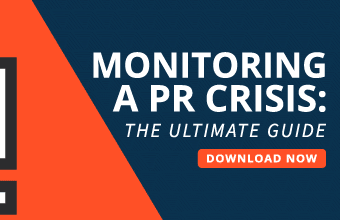As the coronavirus continues to spread, the impact it’s having on communities and the world economy is vast, varied and quickly evolving. As new cases emerge in the U.S. and around the globe, businesses are feeling a strain on productivity, supply chains, profitability and, of course, their people.
New research from G&S Business Communications reveals that communicating your company’s COVID-19 preparedness and response plan to internal and external stakeholders is critical, first and foremost, to ensuring the health and safety of your personnel, customers, and other stakeholders. Thoughtful communication can also ensure business continuity in the days and weeks ahead and minimize the near- and long-term financial and reputational impact of the virus on your business.
The firm’s new survey reveals that employees nationwide are split on the response from their company leaders and what they want to hear during these trying times—but there is also a need to reinforce that responsibility goes both ways.

Key survey findings:
Americans are concerned about coronavirus
About three-quarters (76 percent) of Americans say they are very or somewhat concerned about coronavirus impacting the health of them or their family. Only 6 percent say they are not at all concerned.
Americans expect a lot from companies during a pandemic, including allowing employees to work from home, sharing coronavirus policies and even shutting down operations. Most say they are satisfied with how corporations are responding to the outbreak
Three-quarters of Americans (75 percent) think companies should allow employees to work from home if possible during the coronavirus pandemic. Many say their perceptions of a company would become more positive if it shared its coronavirus policies with the general public (71 percent) or shut down operations (63 percent). On a positive note, nearly three-quarters of Americans (74 percent) say they are satisfied with major corporations’ responses to the outbreak.
A third (33 percent) of employed Americans would still go to work even if they felt sick
Despite warnings from government and health professionals, many employees say they would still go to work. There are several potential reasons, such as that many Americans have little or no savings to sustain them, work in a customer-facing job with no remote opportunities, or they think they would lose their jobs if they stopped showing up for work.

Many Americans say their perception of a company would not change if an employee was sick, but they do expect companies to be transparent in communications
Forty-six percent of Americans say their perception of a company would not change if one of its employees had coronavirus. However, 72 percent of Americans would have a more negative perception of a company if it did not disclose to the public that an employee has coronavirus.
Some companies are communicating with employees more often than others, but most employed Americans are satisfied with the level of communications they are currently receiving from their employer
Among Americans who are employed, over half (55 percent) say their company’s leaders have communicated with employees about coronavirus policies on at least a daily basis in the last week. Seventy-seven percent of employed Americans say their company is doing a good job communicating to employees about coronavirus. Forty percent of employed Americans say they are very satisfied with the communication they’ve received from their company about coronavirus.
However, there are still employed Americans who are not satisfied with communications from their company
Nine percent of employees say their company leaders haven’t communicated at all about company policy on coronavirus, and 12 percent say they have only received one communication in the last week. Nearly a quarter (23 percent) disagree that their company is doing a good job communicating to employees about coronavirus, and nearly the same percentage (22 percent) say they are dissatisfied with the communication they’ve received from their company.
Americans are getting their information from other people, web sources and government content. Social media is also among the top sources, especially for young Americans
Just over half of Americans say they are currently staying informed about coronavirus through friends or family (51 percent). Web searches (50 percent), content published by government sources (49 percent) and social media (40 percent) are also top information sources. Younger Americans are more likely to say they use social media to keep informed about coronavirus than other generations (52 percent of 18-29-year-olds, 34 percent of 30-44-year-olds, 35 percent of 45-60-year-olds, and 18 percent of those age 60+).
This G&S Snap Poll was fielded March 14-15th, 2020, with a representative U.S. sample of 1,009 adults, ages 18+. The sample has been balanced for age and gender using the Census Bureau’s American Community Survey to reflect the demographic composition of the United States.


Audra Hession
Audra Hession, Principal & Managing Director, Corporate Reputation at G&S, offers some deeper insights into how company leaders can handle their shifting workforce during the episode:
What tips or advice would you offer companies to make sure their employees feel supported and connected during this crisis?
- Communicate early and often. Any time there is new information or developments to share, it’s important to do so to quell fears and create a more calming work environment. Employees rely on information they receive to understand the context surrounding a developing situation and to make decisions about what they should do in response.
- Within your communications, employees should also feel that this is a two-way dialogue, where they have a safe space to offer suggestions and express concerns. This helps foster an open, transparent, and trusting working environment. In addition, your communication should reiterate that your company is following all protocols and guidelines from health and government officials, such as the CDC or the WHO, so people know your advice is credible.
- Keep in mind that these are rapidly changing times, and many of your employees may be juggling health concerns and changes in childcare, which may interfere with their traditional way of working. Expressing flexibility in working arrangements and communicating a shared empathy for the challenges we’re all facing will go a long way in building trust and respect.
What are some good ways to ensure that communication remains consistent and supportive with employees, especially those who are working remotely?
- Designate a committee or task force to manage all communications to stakeholders, including employees and customers. This entity should be led by senior leadership, so it is clear company executives are on top of the business and strategy.
- Lean into online and digital tools to facilitate collaboration and create a sense of community versus isolation for your employees.
How can businesses best showcase transparency and authenticity in this volatile environment?
- Stay present, be accessible, and listen to employees’ concerns while problem-solving together. Share the bad news with the good news. If employees only hear good news from you, their trust in the organization will waiver as they begin to question your transparency.
- Leading by example, while demonstrating the organization is pivoting not panicking, will create trust in management’s decisions and the health of the organization.








